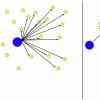Hello,
Firstly, I just want to applaud Turnbuckle for his amazing research and willingness to experiment on himself (same goes for everybody here that has done the same).
Not just in this thread, but so many others through the years. Bravo!
I hope I'm not going too off-topic with my question:
Is there a way one can consume c60 'safely' at all, without risking stem cell depletion (or what it exactly is that happens with c60 use, which has been described by Turnbuckle in this thread) ?
Would it be OK to just take c60 with stearic acid, say, two days per week - long term?
I'm not aiming to do the protocol that this thread is about (not yet anyway. I don't have the funds for all the supplements required)
Like some of you, I also did take quite a bit of c60+EVOO about 8-9 years ago. I felt great.
The c60 gave me better energy; I slept better; and it nearly eliminated my chronic fatigue symptoms.
I had to stop c60 once I couldn't ignore my lower back pain anymore (this pain went away days after stopping c60)
I've been wanting to get back on the c60 train. But reading - yet only vaguely understanding this thread (I only have 7 years of school, total & English is not my first language) - has me scared taking c60 now.
The positive effects of c60 from back when I took it is really something I could do with, now that I'm 10 years older and weaker.




























































